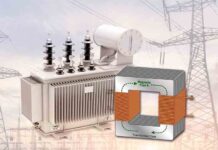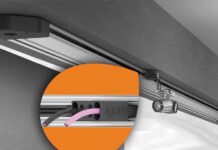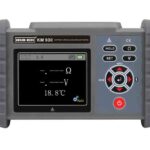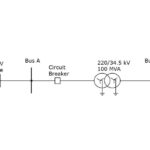
Imagine a scenario where a critical power cable suffers an insulation breakdown, causing an unexpected outage. Traditionally, while a Very Low Frequency (VLF) withstand test might confirm that a breakdown has occurred, it offers no indication of the fault’s location. This typically requires the deployment of specialised cable fault location vans and trained personnel, adding complexity, delays and cost to the repair process.
Medium-voltage cables are essential to energy distribution, and their reliable operation is vital. VLF cable testing, which uses frequencies between 0.01 and 0.1 Hz, is a well-established method for assessing insulation condition, as outlined in IEEE 400.2. This method involves applying low-frequency, high-voltage stress to identify insulation weaknesses. However, if the cable fails during the test, a traditional VLF withstand testing is insufficient for immediate fault location.
Technology Overview
The APL function offers a novel approach that combines cable testing, specifically VLF withstand testing, with cable fault pre-location in a single portable device. The core innovation is its ability to automatically determine the approximate distance to a cable insulation breakdown, which appears as an arc during a VLF withstand test. The APL function captures and analyses the high-frequency transient waves generated by the arc using an integrated hardware and software system. This enables it to provide immediate and useful distance information.
Case Description
A 4.5 km, 34.5 kV XLPE cable in Mexico became inoperative due to a fault of unknown origin. The cable contained four joints, but their locations were undocumented. The APL function is primarily designed to detect and pre-locate high-resistive or intermittent faults that occur as arcs during a VLF withstand test. However, it can still be used effectively as long as the fault is high-resistive and voltage can be applied to the cable.
In this case, since the fault was high-resistive and voltage could be applied, the VLF Tan Delta (TD) maintenance test was initiated following IEEE 400.2. Voltage was applied in steps of 0.5 U0, 1 U0 and 1.5 U0. During the 1 U0 stage (U0 = 19.9 kV), the cable broke down at 16.6 kV.
Immediately after the breakdown, the APL function of the HVA68TD was triggered to estimate the fault location. Three repeated measurements from the near end provided fault distances of 496 m, 521 m and 500 m (see Fig.1), with a standard deviation of only ± 2.17 %, confirming excellent repeatability. A fourth test performed from the far end of the cable showed a fault distance of 3829 m, which is consistent with the known approximate total length of 4.5 km.

of the Arc Pre-Location (APL) result…
Field Strategy and Results
If documentation of the joint locations had been available, the fault could have been located immediately using the pre-location results. However, due to the lack of documentation, the team had to rely on an alternative pinpointing method. In this case, no other specialised fault location method was available. With no documentation of joint locations, the field crew deployed ten people spaced at 20 m intervals within a 500 m radius from the near end. A second controlled breakdown was performed to enable acoustic detection of the fault without any additional equipment. The fault was successfully heard and located at a joint position. Excavation was carried out immediately, confirming the faulty joint (see Fig. 2), which was then replaced.

Conclusion
This case demonstrates the reliability and practicality of the APL method integrated into the HVA68TD system, especially in time-critical fault situations where conventional methods fail or are unavailable. Despite lacking joint location data and operating with limited resources, the team successfully identified and repaired the fault using a single device and basic acoustic pinpointing detection, which confirmed the accuracy of the APL system’s fault pre-location distance. The deployment of APL in this situation notably reduced downtime and simplified the repair process, highlighting its value as a powerful, compact, and efficient tool for medium-voltage cable diagnostics and fault location.
Mariana Felix de Souza and Stanislava Das Mercês João
Website: www.b2hv.com
b2 sales partner for India – OMICRON Energy Solutions Private Limited
Email – info.india@omicronenergy.com



















